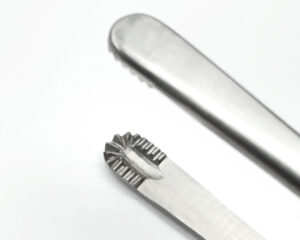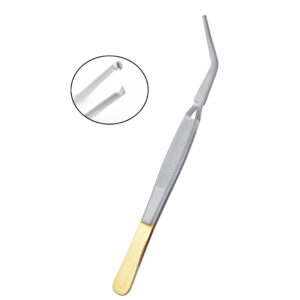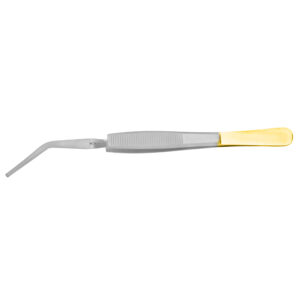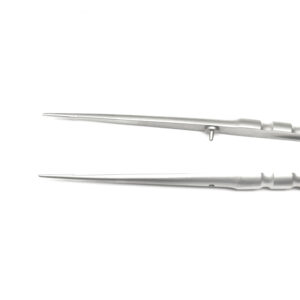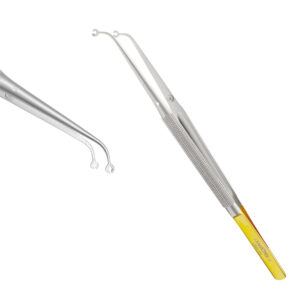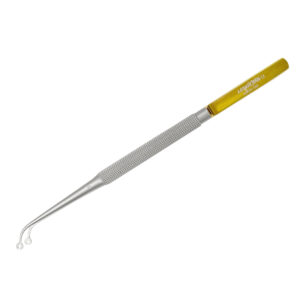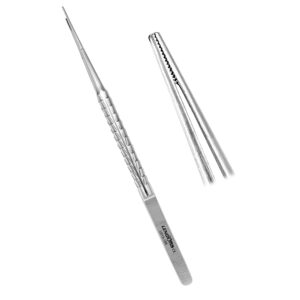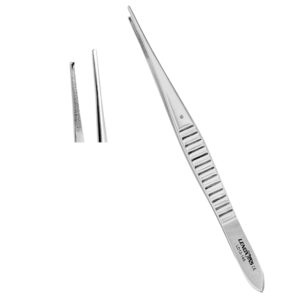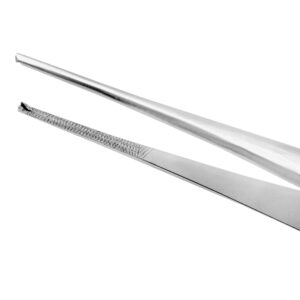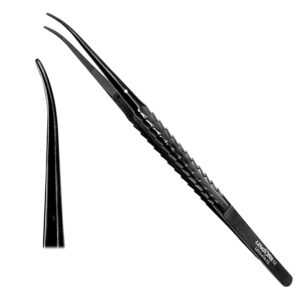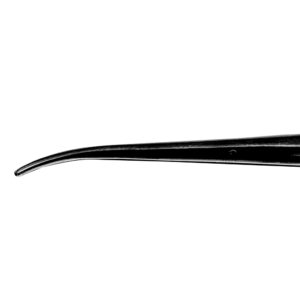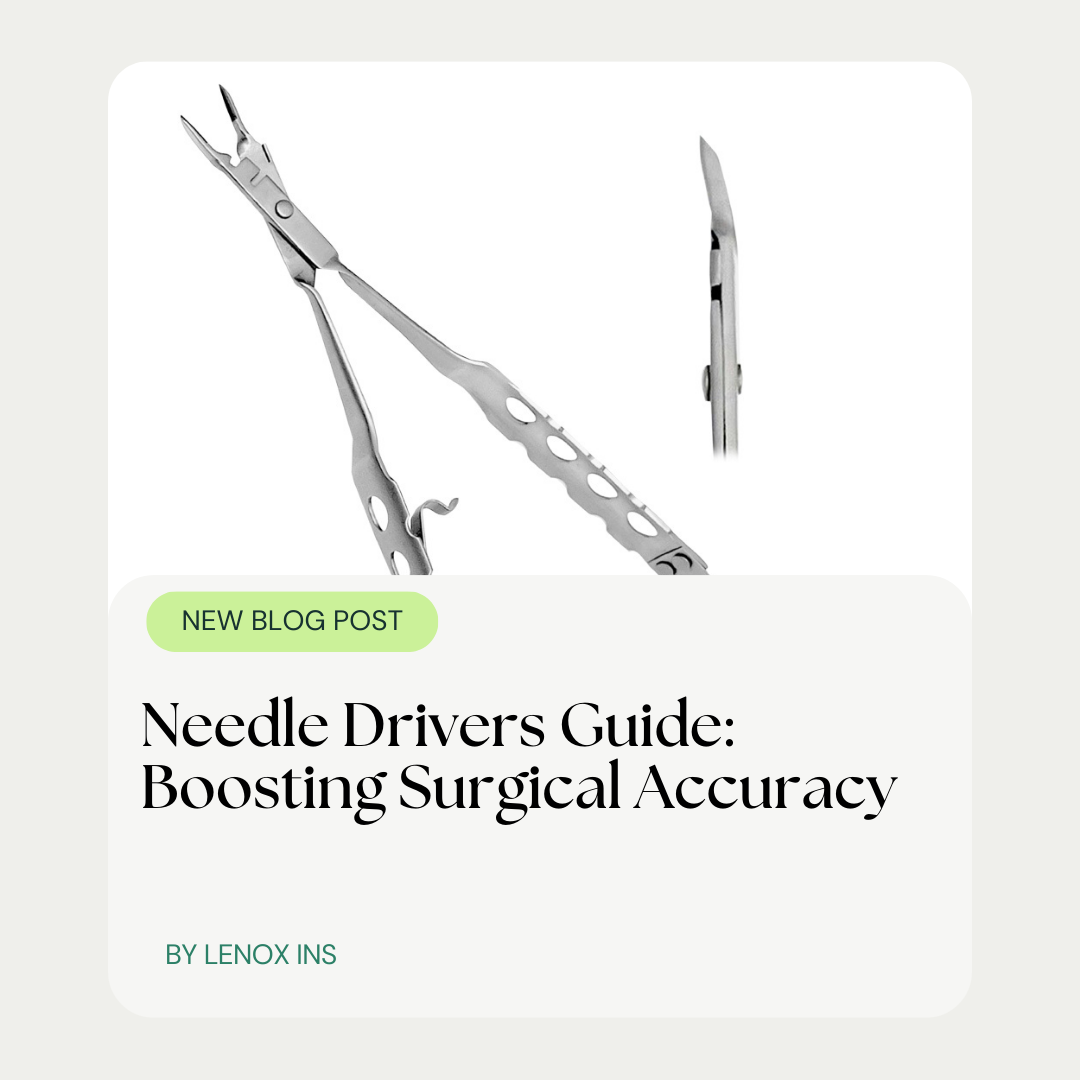Guide to Choosing the Perfect Tissue Forceps for Your Surgical Needs
- Posted December 4, 2024
- by lenoxinstro
Choosing the right tissue forceps is crucial for any surgeon working with delicate tissues, such as those in the gastrointestinal tract or near blood vessels. This guide will help you understand the role of tissue forceps, identify key factors in selection, and explore various types and their applications. By reading this content, you will gain insights into how to select stainless steel forceps that enhance your surgical precision and comfort. If you’ve struggled with finding the right tools for your surgical needs, this guide will provide the clarity you need to make informed decisions.
Understanding the Role of Tissue Forceps in Surgical Procedures
Tissue forceps are essential surgical instruments designed to grasp and manipulate various tissues, including muscle and plastic materials, during procedures. I will discuss common surgical situations where these forceps are utilized, such as in the mouth or laboratory settings, and how the choice of forceps can significantly impact surgical outcomes. Understanding these aspects will help you select the perfect tissue forceps for your specific needs.
Defining Tissue Forceps and Their Functions
Tissue forceps are specialized surgical instruments designed to grasp and manipulate tissues during various surgical procedures, including orthopedic surgery. These instruments often feature a ratchet mechanism that allows for secure holding without continuous pressure from the surgeon, which is crucial for maintaining control and precision. Made from durable materials like titanium, tissue forceps are essential for ensuring optimal outcomes by providing the necessary grip and stability while respecting the delicate physiology of the tissues involved.
Common Surgical Situations Requiring Tissue Forceps
In my experience, tissue forceps are indispensable in various surgical situations, particularly when dealing with injuries or infections. For instance, during orthopedic procedures, I often use these surgical instruments to grasp and manipulate tissues while ensuring that any wires or retractors are positioned correctly to avoid complications. The precision offered by tissue forceps not only aids in effective tissue handling but also minimizes the risk of infection by allowing for careful and controlled manipulation of delicate structures.
Impact of Forceps Choice on Surgical Outcomes
The choice of tissue forceps can significantly influence surgical outcomes, particularly in procedures like plastic surgery where precision is paramount. For example, using the right forceps can help minimize debris during surgery, ensuring a cleaner field and reducing the risk of infection. In my practice, I have found that selecting forceps designed for specific areas, such as those tailored for the cervix, enhances my ability to manipulate tissues effectively while maintaining a sterile environment with the appropriate disinfectant protocols.
| Factor | Impact on Surgical Outcomes |
|---|---|
| Type of Forceps | Ensures precision and control during tissue manipulation. |
| Material | Durability and resistance to corrosion, affecting longevity and safety. |
| Design | Specific designs can reduce debris and enhance visibility. |
| Application Area | Forceps tailored for specific procedures improve handling and outcomes. |
Product Collection
-
Tissue Forceps Russian Pattern 20cm Premium German Stainless Steel – Precision Surgical Instrument
Rated 0 out of 5CA$50Explore the Tissue Forceps Russian Pattern 20cm Premium German Stainless Steel by Lenox Instruments, crafted with circular serrated tips for precision in tissue handling. Trusted by surgical professionals in Canada, USA, UK, Australia, and Europe. -
PRF Tissue Forceps – Precision Dental Surgical Instrument
Rated 0 out of 5CA$40Explore the PRF Tissue Forceps by Lenox Instruments, crafted with fine toothed tips for precision in handling PRF membranes. Trusted by dental professionals in Canada, USA, UK, Australia, and Europe. -
Micro Tissue Forceps, 17cm – Diamond Dust Coated – Precision Surgical Instrument
Rated 0 out of 5CA$90Explore the Micro Tissue Forceps, 17cm - Diamond Dust Coated by Lenox Instruments, crafted with diamond dust-coated tips for precision in micro-surgical procedures. Trusted by surgical professionals in Canada, USA, UK, Australia, and Europe. -
Corn Suture Forceps 17cm Diamond Dust Coated – Precision Surgical Instrument
Rated 0 out of 5CA$90Explore the Corn Suture Forceps 17cm Diamond Dust Coated by Lenox Instruments, crafted with diamond dust-coated tips for precision in suture handling. Trusted by surgical professionals in Canada, USA, UK, Australia, and Europe. -
Cooley Tissue Forceps 18cm EGR Handle – Precision Surgical Instrument
Rated 0 out of 5CA$80Explore the Cooley Tissue Forceps 18cm EGR Handle by Lenox Instruments, crafted with an ergonomic handle for precision in tissue handling. Trusted by surgical professionals in Canada, USA, UK, Australia, and Europe. -
Tissue Forceps 15cm – Precision Surgical Instrument
Rated 0 out of 5CA$30Explore the Tissue Forceps 15cm by Lenox Instruments, crafted with finely serrated tips for precision in tissue handling. Trusted by surgical professionals in Canada, USA, UK, Australia, and Europe. -
Micro Surgical Forceps Tweezers TC 17cm Curved – Precision Surgical Instrument
Rated 0 out of 5CA$90Explore the Micro Surgical Forceps Tweezers TC 17cm Curved by Lenox Instruments, crafted with tungsten carbide tips for precision in micro-surgical procedures. Trusted by surgical professionals in Canada, USA, UK, Australia, and Europe. -
Micro Surgical Forceps 17cm Straight – Precision Surgical Instrument
Rated 0 out of 5CA$90Explore the Micro Surgical Forceps 17cm Straight by Lenox Instruments, crafted with finely serrated tips for precision in micro-surgical procedures. Trusted by surgical professionals in Canada, USA, UK, Australia, and Europe.
Identifying Key Factors in Selecting Tissue Forceps
When selecting tissue forceps, I focus on several key factors to ensure optimal performance during surgical procedures. First, I assess the specific requirements of the surgery, considering the type of tissue and its sensitivity. I also evaluate my own preferences and techniques, as well as the balance between precision and grip strength. Understanding these elements, including the use of hemostats, thumb forceps, and tungsten materials, is essential for effective sterilization and overall surgical success.
Assessing the Surgical Procedure Requirements
When assessing the surgical procedure requirements, I consider the specific tissues involved, such as the gums, and the potential for bleeding during the operation. The choice of steel forceps is crucial, as their durability and ability to withstand autoclave sterilization ensure they remain safe and effective for repeated use. By understanding the unique demands of each procedure, I can select the appropriate forceps that provide the necessary grip and control, ultimately enhancing surgical outcomes and patient safety.
Considering Tissue Type and Sensitivity
When selecting tissue forceps, I always consider the type of tissue I will be working with, as different tissues have varying sensitivities. For instance, during eye surgery, I prefer using fine tweezers designed for delicate manipulation to avoid damaging the surrounding structures. Similarly, when dressing a wound on the jaw, I choose forceps that provide a secure grip without excessive pressure, ensuring that I can handle the tissue gently while maintaining control throughout the procedure.
Evaluating Surgeon’s Preferences and Techniques
When evaluating my preferences and techniques in selecting tissue forceps, I consider how they complement my surgical style, especially in general surgery and microsurgery. For instance, I often prefer forceps that allow for a precise grip, similar to how I would handle a scalpel, ensuring that I can manipulate tissues effectively without causing unnecessary trauma. Additionally, I pay attention to the materials used, as corrosion resistance is vital for maintaining the integrity of the instruments over time, which ultimately impacts my performance during delicate procedures.
Balancing Precision and Grip Strength
In my experience, balancing precision and grip strength is crucial when selecting tissue forceps, especially during delicate procedures like biopsies. I often find that forceps with a fine tip allow for precise manipulation of tissues, while those with a stronger grip help minimize pain and ensure stability when handling materials such as a speculum or during suturing. Choosing the right forceps not only enhances my control but also reduces the risk of complications, making it easier to navigate through the surgical cart and utilize other instruments like scissors effectively.
Exploring Different Types of Tissue Forceps and Their Applications
In this section, I will provide an overview of common tissue forceps varieties, highlighting the differences between standard and specialized forceps. I will discuss how to match forceps types to specific surgical needs, emphasizing the advantages of each design. Understanding these factors, including the role of dental instruments, length, and materials like tungsten carbide, will help you make informed choices for optimal surgical outcomes. For more detailed information, you might want to explore our comprehensive range of products specifically designed for different surgical requirements, such as the tissue forceps.
Overview of Common Tissue Forceps Varieties
In my practice, I frequently encounter various types of tissue forceps, each designed for specific applications. For instance, standard tissue forceps are versatile and suitable for general use, while specialized forceps, such as those with serrated tips, provide enhanced grip for delicate tissues. Understanding the differences between these varieties allows me to select the most appropriate forceps for each surgical procedure, ensuring optimal control and minimizing the risk of tissue damage.
Uses of Standard vs. Specialized Forceps
In my experience, standard tissue forceps are versatile tools that I often use for general surgical tasks, providing a reliable grip for various tissues. However, specialized forceps, such as those with serrated tips or angled designs, are invaluable when I need to handle delicate structures or navigate tight spaces. By understanding the specific applications of each type, I can select the right forceps to enhance my precision and control during procedures, ultimately improving patient outcomes.
Matching Forceps Types to Specific Surgical Needs
When matching forceps types to specific surgical needs, I consider the unique requirements of each procedure. For instance, during delicate surgeries, I often opt for fine-tipped forceps that allow for precise manipulation without damaging surrounding tissues. In contrast, for more robust applications, I select forceps with a stronger grip to ensure stability and control, ultimately enhancing my ability to perform effectively and safely.
| Forceps Type | Best Suited For |
|---|---|
| Fine-tipped Forceps | Delicate surgeries requiring precision |
| Serrated Forceps | Handling slippery or delicate tissues |
| Angled Forceps | Navigating tight spaces during procedures |
| Standard Forceps | General surgical tasks |
Advantages of Each Forceps Design
Each design of tissue forceps offers distinct advantages tailored to specific surgical needs. For instance, fine-tipped forceps excel in delicate procedures, allowing me to manipulate tissues with precision while minimizing trauma. On the other hand, serrated forceps provide a secure grip on slippery tissues, which is essential during surgeries where stability is paramount. Understanding these advantages helps me select the right micro tissue forceps 17cm diamond dust coated, ultimately enhancing my control and improving patient outcomes during various surgical procedures.
Analyzing Material and Design Features of Tissue Forceps
When selecting tissue forceps, I focus on several critical factors, including the comparison between stainless steel and titanium options, which affects both weight and durability. The importance of tip design and serration patterns cannot be overlooked, as they influence grip and precision. Additionally, I consider the weight and balance of the forceps, along with their compatibility for sterilization, to ensure they meet the demands of various surgical procedures.
Comparing Stainless Steel and Titanium Options
When choosing between stainless steel and titanium tissue forceps, I often consider the specific demands of the surgical procedure. Stainless steel offers excellent durability and resistance to corrosion, making it a reliable choice for general use. However, titanium is significantly lighter and provides superior strength, which can enhance my precision during delicate surgeries. Understanding these material differences helps me select the right forceps that align with my surgical needs, ensuring optimal performance and patient safety.
Importance of Tip Design and Serration Patterns
The tip design and serration patterns of tissue forceps play a crucial role in their effectiveness during surgical procedures. A well-designed tip allows for precise manipulation of tissues, which is essential in delicate surgeries where accuracy is paramount. For example, I often choose forceps with fine tips for ophthalmic procedures to avoid damaging surrounding structures, while serrated patterns provide a secure grip on slippery tissues, enhancing control and stability during operations.
| Tip Design | Serration Pattern | Best Suited For |
|---|---|---|
| Fine Tips | Smooth | Delicate surgeries requiring precision |
| Blunt Tips | Serrated | Handling slippery or delicate tissues |
| Angled Tips | Cross-hatched | Navigating tight spaces during procedures |
| Standard Tips | Standard | General surgical tasks |
Weight and Balance Considerations
When selecting tissue forceps, I pay close attention to their weight and balance, as these factors significantly influence my control during surgical procedures. A well-balanced forceps allows for precise manipulation without causing fatigue, which is especially important during lengthy operations. For instance, I prefer lighter titanium options for delicate surgeries, as they enhance my dexterity while maintaining the necessary strength for effective tissue handling.
Product Collection
-
Tissue Forceps Russian Pattern 20cm Premium German Stainless Steel – Precision Surgical Instrument
Rated 0 out of 5CA$50Explore the Tissue Forceps Russian Pattern 20cm Premium German Stainless Steel by Lenox Instruments, crafted with circular serrated tips for precision in tissue handling. Trusted by surgical professionals in Canada, USA, UK, Australia, and Europe. -
PRF Tissue Forceps – Precision Dental Surgical Instrument
Rated 0 out of 5CA$40Explore the PRF Tissue Forceps by Lenox Instruments, crafted with fine toothed tips for precision in handling PRF membranes. Trusted by dental professionals in Canada, USA, UK, Australia, and Europe. -
Micro Tissue Forceps, 17cm – Diamond Dust Coated – Precision Surgical Instrument
Rated 0 out of 5CA$90Explore the Micro Tissue Forceps, 17cm - Diamond Dust Coated by Lenox Instruments, crafted with diamond dust-coated tips for precision in micro-surgical procedures. Trusted by surgical professionals in Canada, USA, UK, Australia, and Europe. -
Corn Suture Forceps 17cm Diamond Dust Coated – Precision Surgical Instrument
Rated 0 out of 5CA$90Explore the Corn Suture Forceps 17cm Diamond Dust Coated by Lenox Instruments, crafted with diamond dust-coated tips for precision in suture handling. Trusted by surgical professionals in Canada, USA, UK, Australia, and Europe. -
Cooley Tissue Forceps 18cm EGR Handle – Precision Surgical Instrument
Rated 0 out of 5CA$80Explore the Cooley Tissue Forceps 18cm EGR Handle by Lenox Instruments, crafted with an ergonomic handle for precision in tissue handling. Trusted by surgical professionals in Canada, USA, UK, Australia, and Europe. -
Tissue Forceps 15cm – Precision Surgical Instrument
Rated 0 out of 5CA$30Explore the Tissue Forceps 15cm by Lenox Instruments, crafted with finely serrated tips for precision in tissue handling. Trusted by surgical professionals in Canada, USA, UK, Australia, and Europe. -
Micro Surgical Forceps Tweezers TC 17cm Curved – Precision Surgical Instrument
Rated 0 out of 5CA$90Explore the Micro Surgical Forceps Tweezers TC 17cm Curved by Lenox Instruments, crafted with tungsten carbide tips for precision in micro-surgical procedures. Trusted by surgical professionals in Canada, USA, UK, Australia, and Europe. -
Micro Surgical Forceps 17cm Straight – Precision Surgical Instrument
Rated 0 out of 5CA$90Explore the Micro Surgical Forceps 17cm Straight by Lenox Instruments, crafted with finely serrated tips for precision in micro-surgical procedures. Trusted by surgical professionals in Canada, USA, UK, Australia, and Europe.
Durability and Sterilization Compatibility
When selecting tissue forceps, I prioritize durability and sterilization compatibility to ensure they withstand the rigors of repeated use in surgical settings. Stainless steel forceps are often my go-to choice due to their resistance to corrosion and ability to endure autoclave sterilization, which is essential for maintaining a sterile environment. In my experience, choosing high-quality materials not only enhances the longevity of the instruments but also contributes to patient safety by minimizing the risk of contamination during procedures.
Evaluating Ergonomics for Optimal Handling and Comfort
Ergonomic design in tissue forceps is crucial for reducing fatigue during surgical procedures. I will discuss how different handle styles impact control and comfort, as well as the importance of customization options for individual surgeons. Additionally, I emphasize the need to test forceps for comfort before making a purchase, ensuring that the selected instruments enhance both performance and ease of use. DeBakey Atraumatic Tissue Forceps
Importance of Ergonomic Design in Reducing Fatigue
In my experience, ergonomic design in tissue forceps plays a vital role in reducing fatigue during surgical procedures. When I use forceps that fit comfortably in my hand and allow for a natural grip, I notice a significant decrease in strain, especially during lengthy operations. This comfort not only enhances my dexterity but also improves my overall performance, allowing me to focus on the task at hand without the distraction of discomfort.
- Ergonomic handles reduce strain on the hand and wrist.
- Comfortable grip enhances dexterity and control.
- Improved design leads to better focus during procedures.
Handle Styles and Their Impact on Control
The style of the handle on tissue forceps significantly influences my control during surgical procedures. I find that handles designed with a contoured shape provide a more comfortable grip, allowing me to maintain precision without straining my hand. For instance, when performing intricate tasks, I prefer forceps with a textured handle, as they enhance my grip and reduce the likelihood of slippage, ultimately improving my overall efficiency and effectiveness in the operating room.
Customization Options for Individual Surgeons
Customization options for tissue forceps are essential for individual surgeons to enhance their comfort and efficiency during procedures. I often find that selecting forceps with adjustable handle designs or varying grip sizes allows me to tailor the instruments to my specific hand shape and surgical style. This personalization not only improves my control but also reduces fatigue, enabling me to perform intricate tasks with greater precision and confidence.
Testing Forceps for Comfort Before Purchase
Before purchasing tissue forceps, I always emphasize the importance of testing them for comfort. Holding the forceps in my hand allows me to assess how they feel during simulated procedures, ensuring they fit well and provide a secure grip. This hands-on approach helps me identify any potential discomfort or strain, which is crucial for maintaining focus and precision during lengthy surgeries.
Ensuring Proper Care and Maintenance of Tissue Forceps
To ensure the longevity and effectiveness of tissue forceps, I prioritize proper care and maintenance. This includes adhering to cleaning protocols that maintain instrument integrity, conducting regular inspections for wear and damage, and implementing safe storage practices. Additionally, I assess when to replace or upgrade my tissue forceps to guarantee optimal performance during surgical procedures. Each of these aspects is crucial for maintaining the quality and reliability of my instruments.
Cleaning Protocols to Maintain Instrument Integrity
To maintain the integrity of tissue forceps, I follow strict cleaning protocols after each use. I begin by rinsing the instruments with cold water to remove any blood or tissue debris, which helps prevent staining and corrosion. Following this, I use a mild detergent and a soft brush to thoroughly clean the forceps, ensuring that all surfaces, including serrations and tips, are free from contaminants. Proper cleaning not only extends the lifespan of the instruments but also ensures they remain safe and effective for future surgical procedures.
Regular Inspection for Wear and Damage
Regular inspection of tissue forceps is essential to ensure their reliability and effectiveness during surgical procedures. I make it a practice to examine my instruments for any signs of wear, such as nicks, bends, or corrosion, which can compromise their performance. By conducting these inspections routinely, I can identify potential issues early, allowing for timely repairs or replacements that ultimately enhance patient safety and surgical outcomes.
Safe Storage Practices
To ensure the longevity and effectiveness of tissue forceps, I prioritize safe storage practices. I always store my forceps in a designated, clean area, preferably in a protective case or tray that prevents them from coming into contact with other instruments, which can cause damage or dulling of the tips. Additionally, I make sure to keep them in a dry environment to avoid corrosion, ensuring they remain in optimal condition for my surgical needs.
| Storage Practice | Description |
|---|---|
| Designated Storage Area | Store forceps in a clean, specific location to prevent damage. |
| Protective Cases | Use cases or trays to avoid contact with other instruments. |
| Dry Environment | Keep forceps in a dry place to prevent corrosion. |
Product Collection
-
Tissue Forceps Russian Pattern 20cm Premium German Stainless Steel – Precision Surgical Instrument
Rated 0 out of 5CA$50Explore the Tissue Forceps Russian Pattern 20cm Premium German Stainless Steel by Lenox Instruments, crafted with circular serrated tips for precision in tissue handling. Trusted by surgical professionals in Canada, USA, UK, Australia, and Europe. -
PRF Tissue Forceps – Precision Dental Surgical Instrument
Rated 0 out of 5CA$40Explore the PRF Tissue Forceps by Lenox Instruments, crafted with fine toothed tips for precision in handling PRF membranes. Trusted by dental professionals in Canada, USA, UK, Australia, and Europe. -
Micro Tissue Forceps, 17cm – Diamond Dust Coated – Precision Surgical Instrument
Rated 0 out of 5CA$90Explore the Micro Tissue Forceps, 17cm - Diamond Dust Coated by Lenox Instruments, crafted with diamond dust-coated tips for precision in micro-surgical procedures. Trusted by surgical professionals in Canada, USA, UK, Australia, and Europe. -
Corn Suture Forceps 17cm Diamond Dust Coated – Precision Surgical Instrument
Rated 0 out of 5CA$90Explore the Corn Suture Forceps 17cm Diamond Dust Coated by Lenox Instruments, crafted with diamond dust-coated tips for precision in suture handling. Trusted by surgical professionals in Canada, USA, UK, Australia, and Europe. -
Cooley Tissue Forceps 18cm EGR Handle – Precision Surgical Instrument
Rated 0 out of 5CA$80Explore the Cooley Tissue Forceps 18cm EGR Handle by Lenox Instruments, crafted with an ergonomic handle for precision in tissue handling. Trusted by surgical professionals in Canada, USA, UK, Australia, and Europe. -
Tissue Forceps 15cm – Precision Surgical Instrument
Rated 0 out of 5CA$30Explore the Tissue Forceps 15cm by Lenox Instruments, crafted with finely serrated tips for precision in tissue handling. Trusted by surgical professionals in Canada, USA, UK, Australia, and Europe. -
Micro Surgical Forceps Tweezers TC 17cm Curved – Precision Surgical Instrument
Rated 0 out of 5CA$90Explore the Micro Surgical Forceps Tweezers TC 17cm Curved by Lenox Instruments, crafted with tungsten carbide tips for precision in micro-surgical procedures. Trusted by surgical professionals in Canada, USA, UK, Australia, and Europe. -
Micro Surgical Forceps 17cm Straight – Precision Surgical Instrument
Rated 0 out of 5CA$90Explore the Micro Surgical Forceps 17cm Straight by Lenox Instruments, crafted with finely serrated tips for precision in micro-surgical procedures. Trusted by surgical professionals in Canada, USA, UK, Australia, and Europe.
When to Replace or Upgrade Tissue Forceps
Knowing when to replace or upgrade tissue forceps is essential for maintaining optimal performance during surgical procedures. I typically assess my instruments for signs of wear, such as dull tips, corrosion, or any structural damage that could compromise their effectiveness. If I notice any of these issues, or if the forceps no longer provide the precision and grip I require, it’s time to consider investing in new, high-quality tissue forceps that meet my surgical needs:
- Inspect for signs of wear and damage regularly.
- Evaluate performance during procedures to ensure effectiveness.
- Consider advancements in design and materials for upgrades.
Conclusion
Choosing the right tissue forceps is crucial for achieving optimal surgical outcomes. By understanding the specific requirements of each procedure, considering tissue sensitivity, and evaluating personal preferences, you can select instruments that enhance precision and control. Prioritizing ergonomic design and proper maintenance further ensures the longevity and effectiveness of your forceps. Ultimately, making informed choices about tissue forceps significantly impacts both your performance and patient safety in the operating room.



